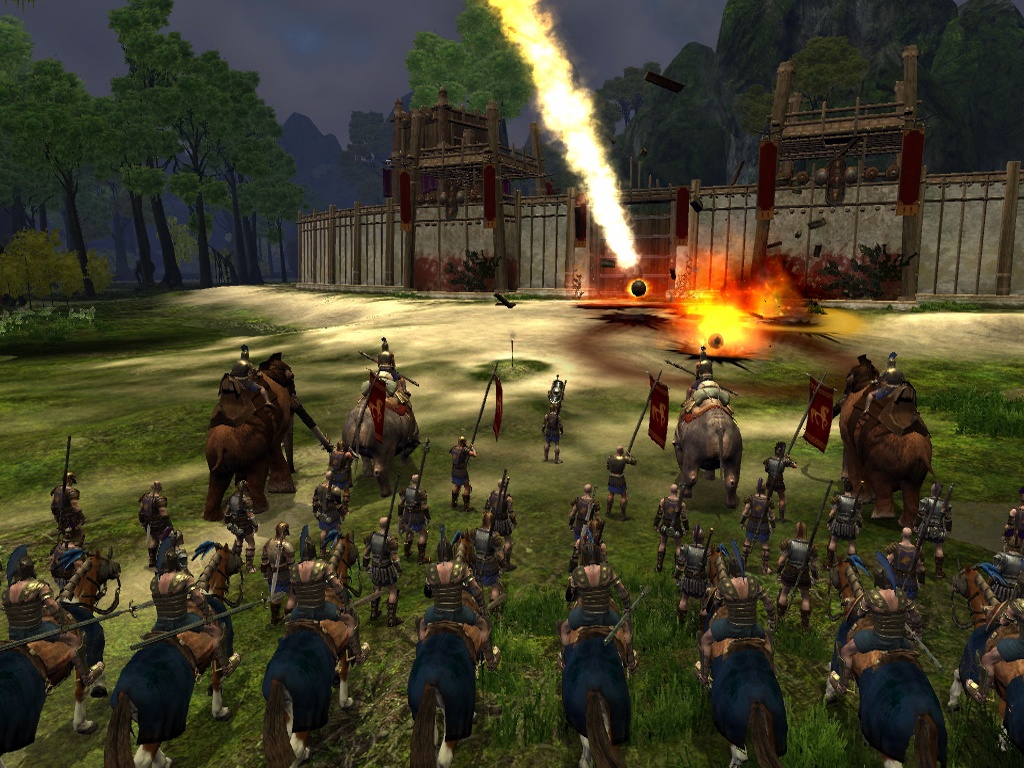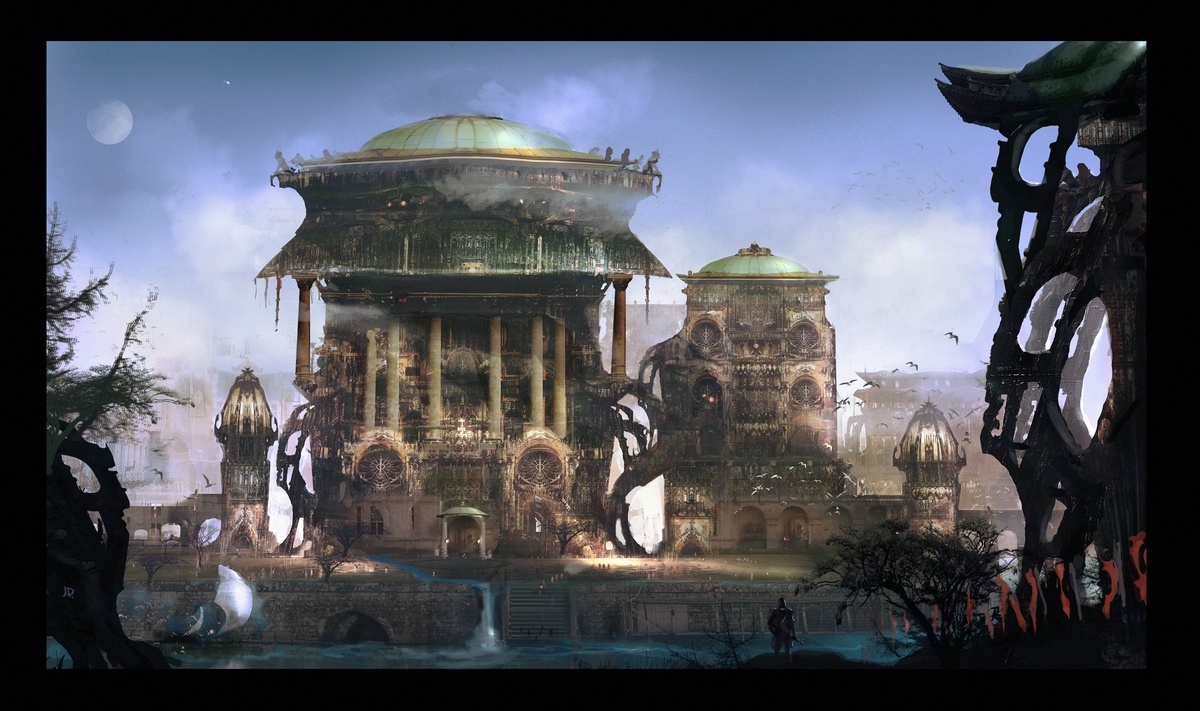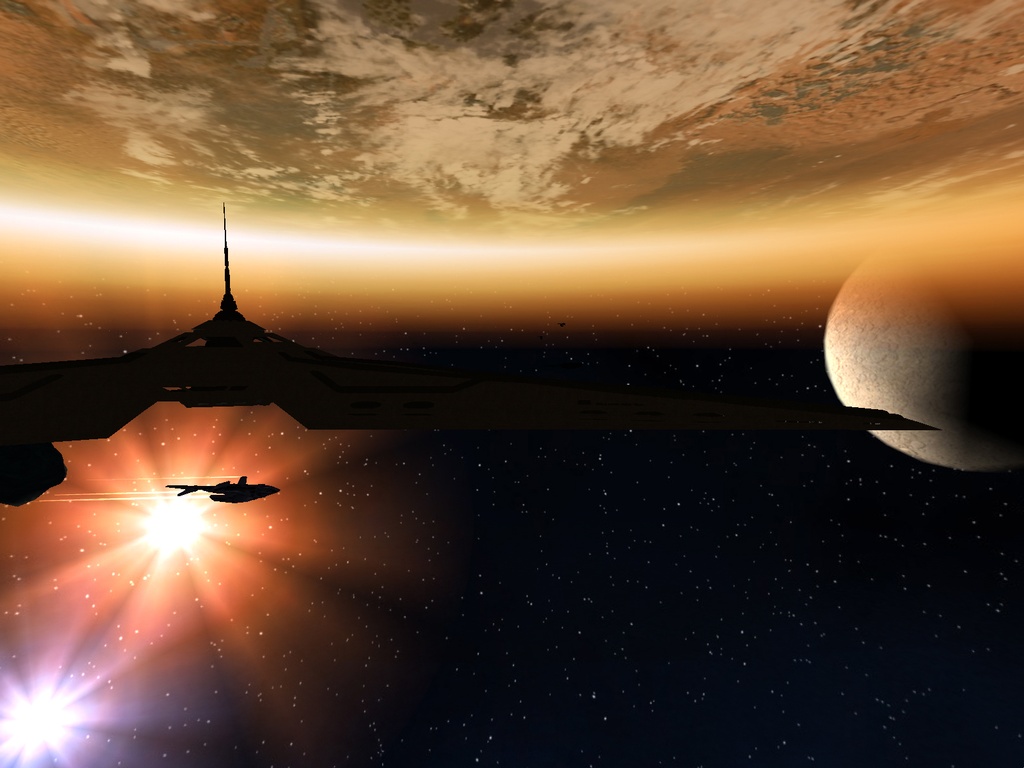The State of the MMO: Building a World, Part 2
In part 2 of ongoing series, multiple online RPG designers give us further insight into the building of a persistent world.
Last week, we initiated our series on massively multiplayer development with a look at world design. Not only did the development teams that participated give us great insight--they gave us more than we could fit into a single entry. This article continues last week's introductory feature.
Eventually, the bits and pieces of a world come together, and regions stop looking less like environments filled with models and light sources, and start looking more like actual places. Games only get so many chances to instill the right kind of emotions in players before they give up and move to something that offers the sense of wonder they come seeking. What do MMO designers want you to feel when you step foot in their digital fantasies?
"I think I want a mix of 'yeah, that's what I thought that looked like' and 'so that's what that looked like,' with a dash of 'holy shit' mixed in now and then," says Chris Pierson at Turbine, regarding The Lord of the Rings Online. "When you're working with a shared or licensed world, you have to get the feel right, and occasionally throw a twist in to your interpretation--not so much that it gets off-putting, but enough to keep people on their toes. Sometimes Tolkien does this for us, inadvertently, by including details that haven't necessarily carried forward in a hugely visible way into other visual interpretations of his work."
Annie VanDermeer Mitsoda had similar aspirations for Guild Wars 2. "I was hoping for a world that seems exciting and thrilling but not punishing or frustrating, one that invites you to do sometimes silly, non-standard things like grab rocks and jump up onto buildings and just talk to every single person you see. And I think we made it! And weirdly enough, the people I see who are adapting best to it are the non-standard players, the non-MMO veterans, who just run in the game and go completely nuts and do everything. Sometimes MMO diehards take a while to get out of their usual habits and rhythms and just start to enjoy a world that is focused on being expansive and reactive and tactile. But once they do, it's a delight to just hop in the game and see people appreciating these little details we put in there with the fervent hope that someone, somewhere will discover them and think it's special. That's catnip to us game devs, we love it entirely."
Or as Mitsoda's colleague, Mike Ferguson, puts it: "I want first-time players in Guild Wars 2 to feel that they are awesome." Ffinch and Fong at Trion Worlds didn't mince words, either: "[We wanted] a sense of wonder and explosion in the brain from visual awesomeness!"
It's not quite that simple for the Rift team, however. "Achieving a sense of wonder and discovery depends a lot on progression and change in scenery. The pacing helps a lot too, you want to hook the audience in early but not show all your cards in the beginning. We lead the player along trying to guide them towards a big reveal for some of our more impressive points of interest. There can be no doubt that Rift is a truly beautiful game, with some amazing view and places to discover."
Given how different it is from most online realms, it's no surprise that Funcom's Ragnar Tornquist had something more mysterious in mind for The Secret World. "I want players to feel there's a whole new world out there, filled with infinite possibility," he says. "I want players to step onto Solomon Island and to feel there's history there, that the place has soul, and that there are vast areas to explore and discover and experience. Mystery is extremely important, and maintaining that mystery is a real challenge, and this is where the attention to detail is important. The more granular your world is, the more there is to discover, and the more players will stay intrigued and engaged for a long, long time."
There are always ways to inject a bit of your own character, style or imagination into anything to make it interesting.
"With The Secret World, we left nothing to chance," Tornquist continues. "There's not a single sign, a single road, a single building, a single asset that hasn't been placed where it is for a reason, and the deeper you dig the more you discover. In that way, the world stays fresh for much longer, and players really learn to appreciate how much the development team has invested in the world."
In a way, Tornquist has the edge over his peers in the industry when it comes to world creation, if only because his team wasn't hamstrung by the tropes we associate with fantasy games. Fantasy worlds consistently present the usual Tolkiensque suspects: enchanted forests, grunting trolls, pointy-eared elves, and so forth. And in Lord of the Rings Online, there's no escaping these familiar conventions. How does Turbine's Chris Pierson make the conventions feel new and fresh, considering their pervasiveness in modern fantasy?
"That's a fundamental challenge when you're doing Tolkien," says Pierson, "because he was the modern source of a fair number of those tropes. Even radically different fantasy elves are often defined by the ways they're not like Tolkien Elves. So to an extent, unlike a property where designers are trying to carve out a brand-new identity for their world, we have to set the whole 'trope' notion aside and just trust the source. We're not reinventing the troll. To do so would be, to an extent, a violation of the material. In a lot of cases, it's more a matter of concentrating things to their platonic (Tolkienic) ideal, pulling from both his descriptions and the sources that inspired him, like Anglo-Saxon and Norse folklore. You make them interesting in a Tolkien game by doing them well, and by steeping them in as much of the source material as you can. Anything else, and the 'that's it!' reaction you're trying to get out of the player is going to go out the window, and you've messed up."
Other developers aren't beholden to Tolkien's specific vision, though his influence is still keenly felt. With Guild Wars 2, Annie VanderMeer Mitsoda wanted to subvert the tropes, rather than to dismiss them out of hand. "We have ogres in Guild Wars 2, sure; they're big and hulking, but they're actually an ancient race that lives in tribal groups and holds a deep respect for the bond between a hunter and their pet. They're an old fantasy standby that we've folded into the world of Tyria, but they're not a generic 'bad guy' race, they're not there to tick a box or take up space--they have a society that functions with its own unique rhythm. And when you talk to an ogre, even when you fight them, you see how they're different, and the role they have in the world."
The Rift team has similar ideals. "There are always ways to inject a bit of your own character, style or imagination into anything to make it interesting. Having a vast library of ideas and knowing what has been done before helps, but to push beyond this we inject the culture of our inhabitants; we consider the local population and how they might have influenced the look and feel of an area. The trick is to maintain the consistency of whatever you apply throughout the environment. Consistency becomes style."
And style is an element all of these developers are conscious of. You want to establish a mood and a feeling right out of the gate, of course, but there is a lot of room to play within the artistic sandbox. But there's a risk here. If the world doesn't have enough visual variety, players grow weary of gazing at the same repetitive assets; if the world isn't cohesive, on the other hand, it feels disorganized and unfocused. With The Secret World, Funcom utilized two art directors in order to find the right balance, though spreading art design across multiple teams had its challenges.
"This makes it even more challenging to maintain overall consistency of direction, but we also wanted the game to have a slightly different vibe and visual style from zone to zone," says Ragnar Tornquist. "Solomon Island, for example, draws inspiration from gothic horror and zombie movies, with its misty woods and quaint, quiet Maine township. It's an almost drab, dreary reality that is made infinitely creepy by the fact that almost everyone is dead or gone. Egypt is a lot more vibrant and colourful, drawing on adventure and pulp movies, and on ancient Egyptian mythology and architecture. And Transylvania's Shadowy Forest was simply a case of seeing how far we could take the game into fantasy territory and still maintain that TSW vibe."
At both ArenaNet and Trion Worlds, the teams consciously chose artistic assets that would be used to provide cohesion, even when the overall vibe would shift from zone to zone. With Guild Wars 2, ArenaNet grouped environmental concepts into similar looks in order to retain consistency. "This helped define the regions of Tyria, but also the variety that each region could have," says Steve Hwang. "Most maps, vegetation, and objects in the world are associated with a region in their naming, which helps keep their usage visually unified." Similarly, Ffinch and Fong at Trion Worlds focused on balancing cohesion with variety at the very beginning of the development cycle. "There are a lot of techniques we use to deliver wide variety while maintaining visual consistency but the primary one is careful initial planning. Style and color guides, example pieces, and encouraging the team to share source materials along with the workflow we use and frequent art reviews lead to an awareness of what the team as a whole is creating."
Clearly, art teams get remarkably granular during this process, though they aren't always without references to draw from. The Secret World takes place on our own planet, and Ragnar Tornquist and team dissected photographs taken in Egypt, Romania, and elsewhere.
"With TSW, we were […] able to draw upon an enormous amount of photographs of the geographical areas in the game--some of them taken by the team. That made the process a lot easier, and saved us a great deal of concept work. Instead, our artists had time to work on the elements that make our game unique and stand apart--the things we layer on top of the mundane reality. What this meant was that we stuck as closely as possible to how things look in Maine, in Egypt, and in Romania--at least as a starting point--and then we were able to build on that to create locations that would resonate with players."
Tornquist continues: "But yeah, there was a great deal of granularity to how we created our world. The details are important to us, because we need our players to buy into the fantasy, and in order to do that it needs to feel right. If Kingsmouth had houses that looked out of place for a small fishing community in Maine, the illusion would fall apart. Being set in the modern-day real world made it even more important for us to look and feel as real as possible."
Personally, I would love to jump back into the Anarchy Online universe and press the reboot button.
Over at Turbine, Tolkien's books were the ultimate primer on how Middle-earth should be detailed. "Areas with a lot of lore--stuff that appears, or is heavily referenced, in the books--get a lot of concept art. Larger points of interest in the non-lore-intensive parts of the world do too. For the overall palette of an area, though, I'm usually the one who makes the call by using our existing assets and monkeying with their textures so that they have the vibe I'm looking for. This sort of thing is based on reference images that I collect from various sources and go over with the design and art leads."
And don't forget: art doesn't exist in a vacuum. As Trion Worlds' Ffinch and Fong state, "We do get pretty in depth with some of the major themes. We do that for art, some for lore, and also for gameplay reasons. That being said, we usually focus on the big picture, and rely on the artists to be able to inject some of their creativity as long as it fits the theme and style of the area." But what are those gameplay considerations? Bioware's James Ohlen gives a specific example from Star Wars: The Old Republic. "Foliage density is something you wouldn't think is important, but it actually has a significant impact on gameplay. Not enough foliage and the world doesn't feel real. Too much and the player might miss out on seeing enemies."
It's probably no surprise that so much effort and consideration goes into building the giant worlds you explore in online role-playing games, but almost nothing is left to chance. MMOG designers consider everything from the overall tone of their worlds to the placement of trees and rocks. And of course, the work isn't done once the game is released: these worlds aren't static, and their builders remain active in the months and years beyond that initial launch.
Eventually, however, many developers move to new projects, even as they continue to maintain existing ones. Curious about Funcom's future, we asked Ragnar Tornquist if he'd ever revisit older worlds in light of MMOG sequels like Guild Wars 2, Asheron's Call 2, or EverQuest II. And his answer was a resounding "yes."
"Absolutely! Personally, I would love to jump back into the Anarchy Online universe and press the reboot button--not because there's anything wrong with the game as it stands, but because it'd be fun to reimagine the story and setting from the ground up, and to use the latest-and-greatest in our proprietary Dreamworld technology to make Rubi-Ka come to life. I'm not sure it's ever going to happen, but I'd certainly love to be a part of that--some day."
So don't dismiss the idea of an Anarchy Online 2 just yet.
'Got a news tip or want to contact us directly? Email news@gamespot.com




Join the conversation